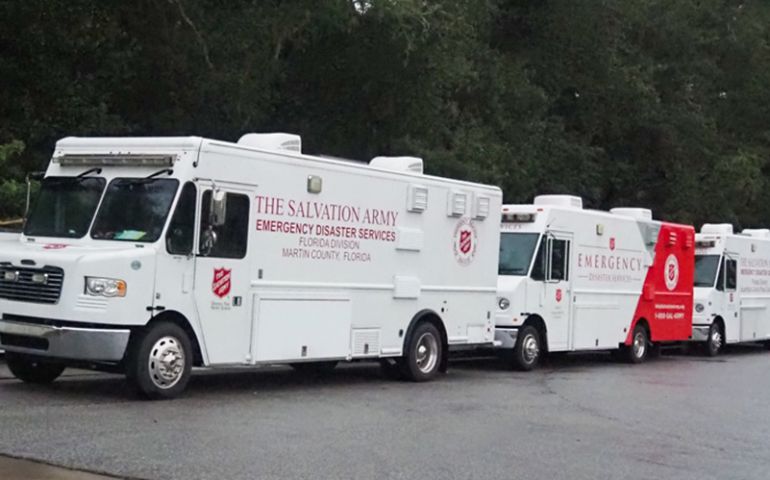Prepared and Ready: The Salvation Army Activates Emergency Response Teams in Advance of Idalia
Michelle Hartfield | michelle.hartfield@uss.salvationarmy.org

Atlanta, GA - As tropical cyclone Idalia reaches hurricane strength, Salvation Army disaster teams across the southeast are preparing for the storm and are urging the public to do the same. The Salvation Army is placing mobile feeding units and personnel on stand-by in Florida, Georgia, and the Carolinas and is closely coordinating with federal, state, and local emergency management agencies in preparation for Idalia making landfall.
The Salvation Army of Florida division has activated sixteen mobile feeding units. Eight of these units are mobilizing to to wait out the storm in a staging area in Lakeland, Florida, while eight others are ready to provide services locally in communities likely to be affected. In addition to these units, an Incident Management Team is staging in Lakeland where its members will shelter in place until it has been deemed safe to enter the affected areas and start service to survivors and first responders. The Salvation Army’s disaster warehouse in Tampa, Florida, has also been activated and is stocked with critical emergency relief supplies, such as food, water, clean-up kits, and baby supplies.
In Georgia and the Carolinas, Incident Management teams and more than 20 additional feeding units have been placed on standby. Fleets of specialized equipment, such as mobile command posts, bunk trailers, shower units, and laundry trailers are stocked and prepared to deploy as needed. The Salvation Army is also working closely with partners such as Southern Baptist Disaster Relief to coordinate the deployment of field kitchens to be ready to provide thousands of meals per day after Idalia makes landfall.
“The Salvation Army remains steadfast in our commitment to serve local communities in every way we can,” said Major Todd Hawks, Territorial Community Relations and Development Secretary. “While we always hope our services will not be needed, we ensure that we are prepared and ready to serve when called upon.”
This summer, The Salvation Army conducted comprehensive simulation-based training to further educate and prepare their disaster relief professionals. During the exercises, disaster relief personnel were trained on how to set up, maintain, and demobilize specialized equipment used in disaster response as well as the use of Starlink connectivity systems to broadcast information and images from the ground after a disaster hits. The Salvation Army’s EDS team is dedicated to continually improving its response and communication strategies during emergency situations.
The best way to support The Salvation Army’s disaster preparation and response efforts is by making a financial contribution, which allows The Salvation Army to meet immediate and long-term needs. During emergency disasters, 100% of designated gifts are used to support specific relief efforts.
- Visit helpsalvationarmy.org.
- Call 1-800-SAL-ARMY.
- Or text “STORM” to 51555.
The Salvation Army annually helps more than 30 million Americans overcome poverty, addiction, and economic hardships through a range of social services. By providing food for the hungry, emergency relief for disaster survivors, rehabilitation for those suffering from drug and alcohol abuse, and clothing and shelter for people in need, The Salvation Army is doing the most good at 7,600 centers of operation around the country. In the first-ever listing of “America’s Favorite Charities” by The Chronicle of Philanthropy, The Salvation Army ranked as the country’s largest privately funded, direct-service nonprofit. For more information, visit www.SalvationArmyUSA.org. Follow us on Twitter @SalvationArmyUS and #DoingTheMostGood.